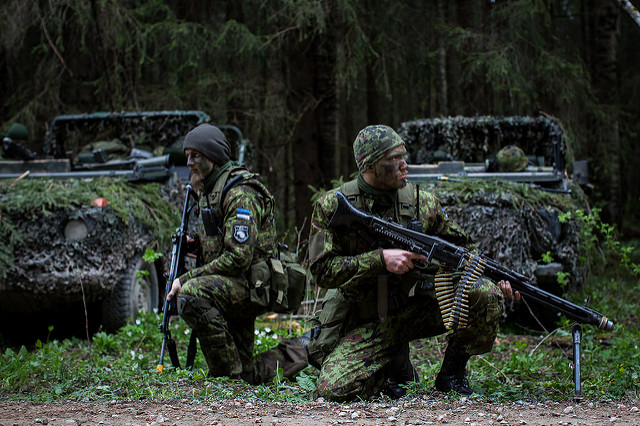 The question of how to respond to increasing Russian aggression remains Estonia’s top priority.
The question of how to respond to increasing Russian aggression remains Estonia’s top priority.
The facts are stark: We have seen violations of our airspace and irregular flights and mysterious submarines in the Baltic Sea….
Russia routinely holds military exercises, often unannounced or with little notice, simulating an attack on the Baltic states or our Nordic neighbors, often practicing to cut off the Baltics from the rest of NATO or otherwise challenge the Article 5 collective defense principle of the alliance. Russia will hold more than 2,000 military exercises this summer; the scale of these exercises, sometimes involving more than 100,000 troops, dwarfs those of NATO .
Before NATO confirmed the deployment of four new international battalions (up to 4,000 troops) to Estonia, Latvia, Lithuania and Poland, Russia announced that it will send three new divisions (30,000 men) to its western and southern borders.
With all due respect to those who claim that NATO is “warmongering” or “provoking Russia” with our exercises, this is the reality: NATO drills prepare for the defense of our territory, our allies and our people in case of attack. Russia’s drills are offensive, simulating the invasion of its neighbors, the destruction and seizure of critical military and economic infrastructure, and targeted nuclear strikes on NATO allies and partners….
We hope that the new NATO battalions will be backed by predeployed equipment that will ensure a rapid response to any Russian challenge to Estonia or the other Baltic states. We also hope that the arrival of the new battalions will be accompanied by discussions about how to disrupt and respond to any Russian attempt to activate its anti-access/area denial capabilities and cut the Baltics off from the rest of NATO. This may require unconventional thinking on new responses to hybrid threats.
Marina Kaljurand is Estonia’s minister of foreign affairs.
Image: Estonian army scouts, May 11, 2015 (photo: NATO)
